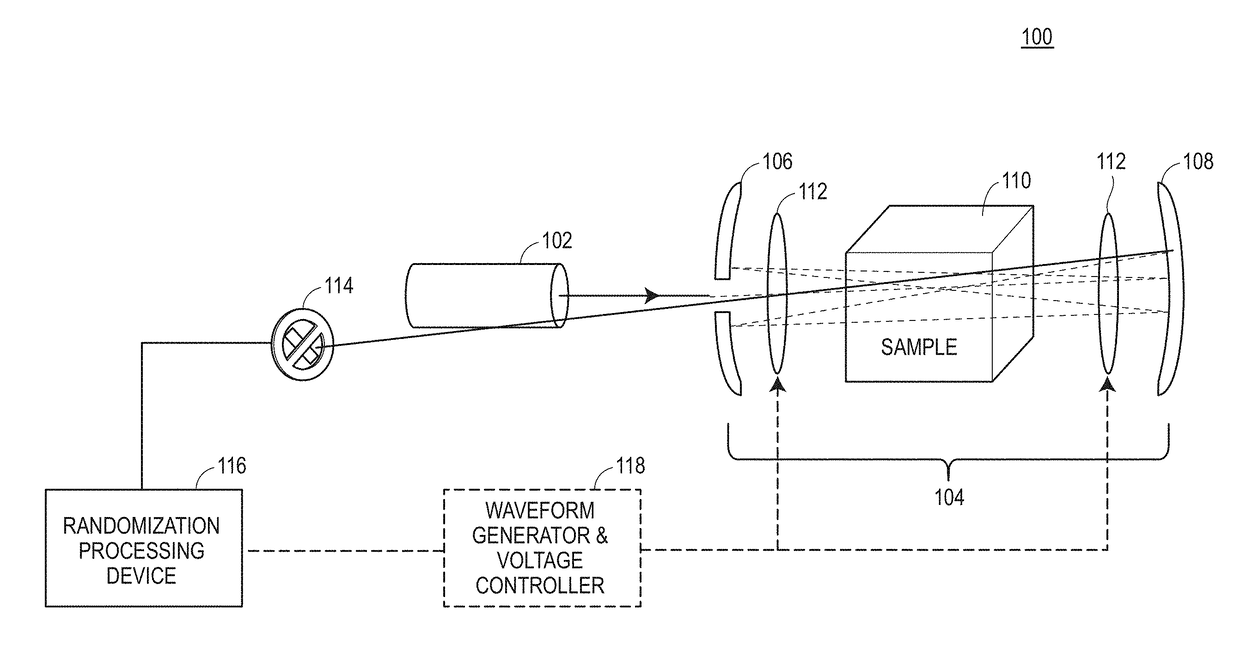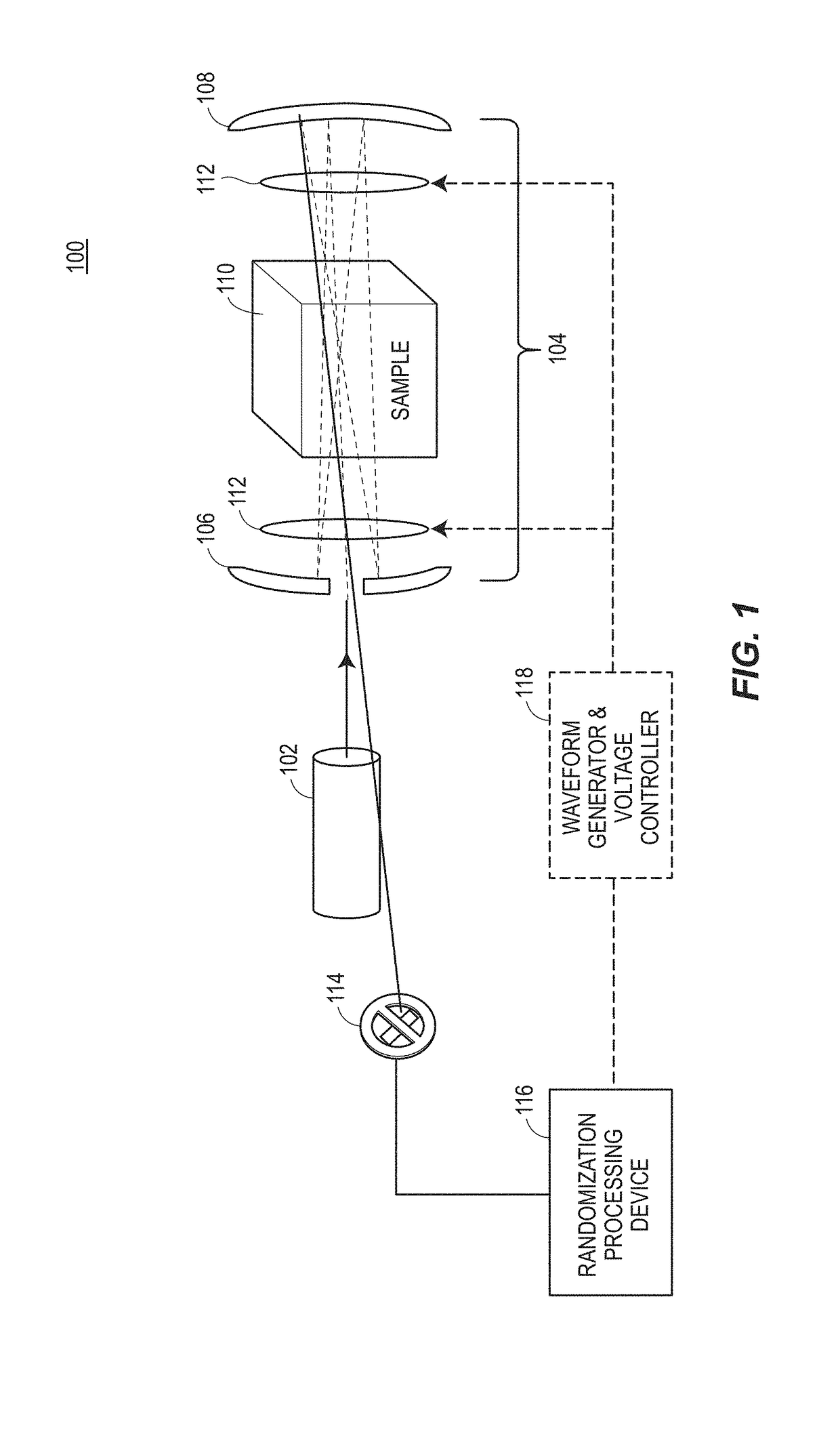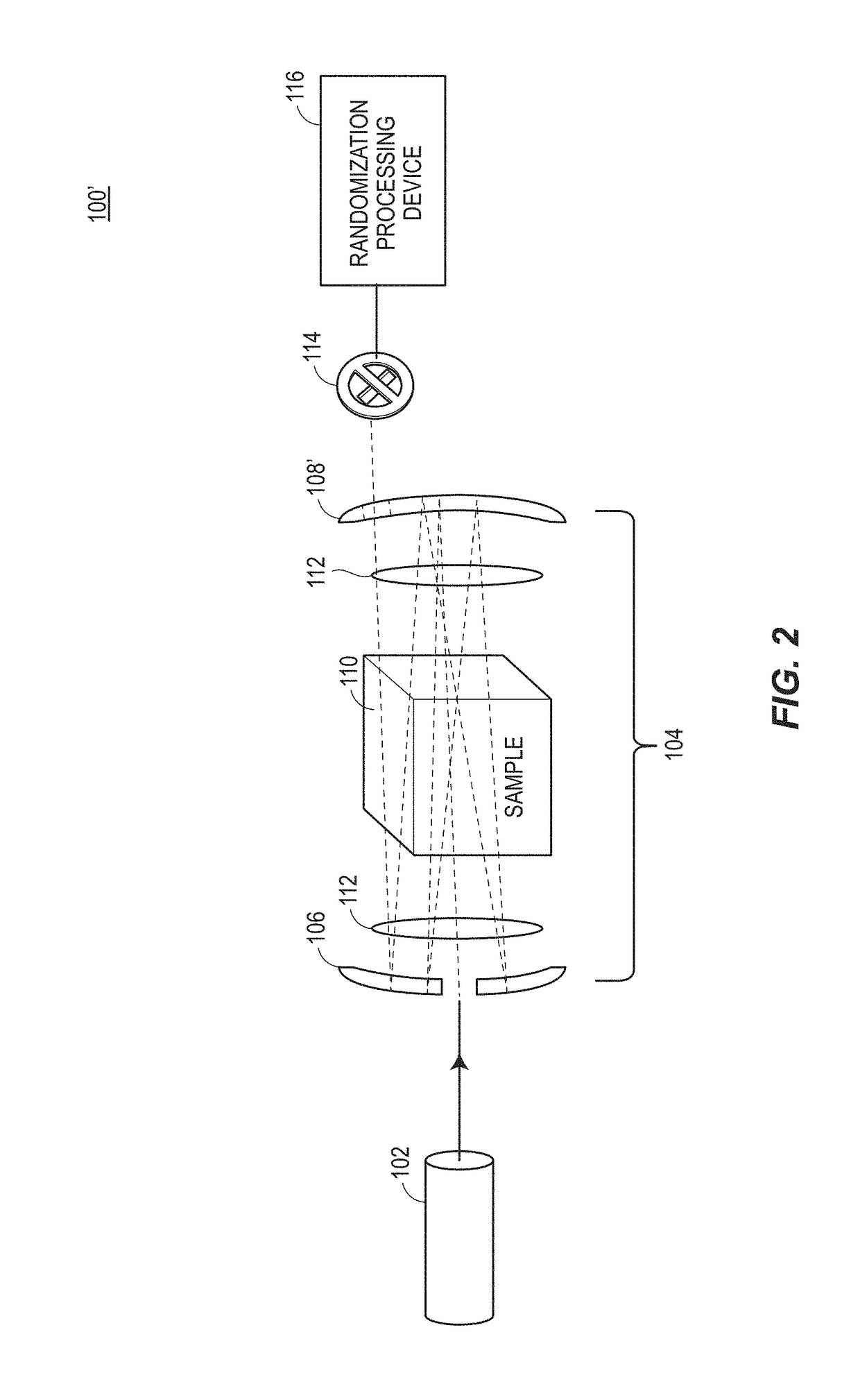Generation of random numbers through the use of quantum-optical effects within a mirror cavity system
a technology of quantum optics and mirror cavity, applied in the direction of instruments, computing models, digital transmission, etc., can solve the problems of light output exhibiting noise, and achieve the effect of enhancing noise and low nois
- Summary
- Abstract
- Description
- Claims
- Application Information
AI Technical Summary
Benefits of technology
Problems solved by technology
Method used
Image
Examples
Embodiment Construction
[0022]The present techniques apply birefringence to generate a randomized energy or light output from an incident beam of light, which may or may not be initially coherent. Optical birefringence phenomena occurs when a material divides an incoming unpolarized or polarized beam of light into two distinct states depending on the direction of the incoming electric field and the alignment of the material's atomic structure. Birefringence materials have already found use in random number generators in the form of beam splitters that randomly deflect a single photon, in a “mixed quantum (polarization) state,” to one direction or another. These devices are single stage devices, operating on one photon, which means they are inherently impractical for applications in which a significantly large randomized bit stream is needed, as is the case for most computing applications. Moreover, even the randomization of one photon at a time has questionable utility, because the techniques often produce...
PUM
 Login to View More
Login to View More Abstract
Description
Claims
Application Information
 Login to View More
Login to View More - R&D
- Intellectual Property
- Life Sciences
- Materials
- Tech Scout
- Unparalleled Data Quality
- Higher Quality Content
- 60% Fewer Hallucinations
Browse by: Latest US Patents, China's latest patents, Technical Efficacy Thesaurus, Application Domain, Technology Topic, Popular Technical Reports.
© 2025 PatSnap. All rights reserved.Legal|Privacy policy|Modern Slavery Act Transparency Statement|Sitemap|About US| Contact US: help@patsnap.com



